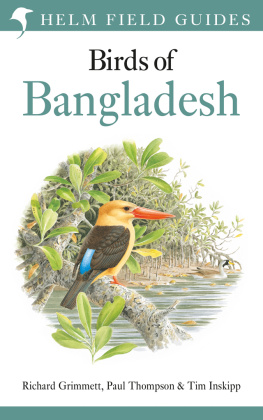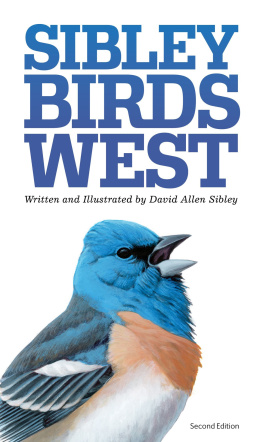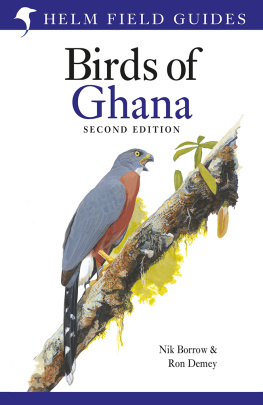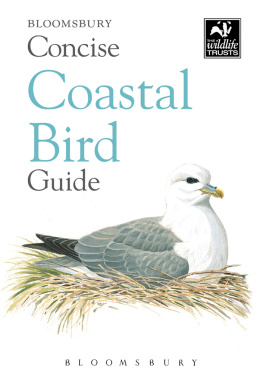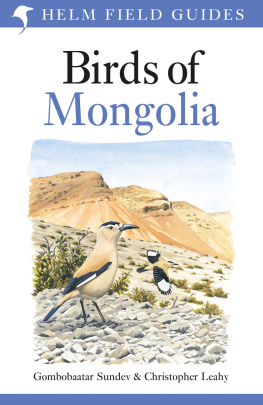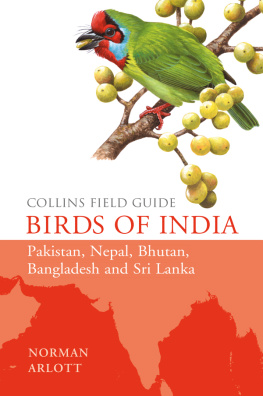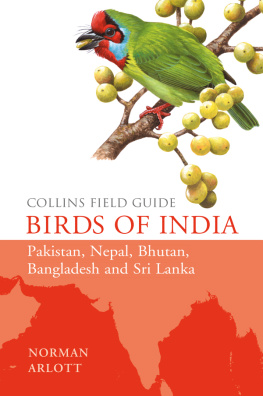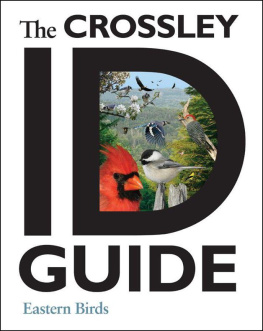Richard Grimmett
In loving memory of his mum, Molly Grimmett.
Happy memories shine bright and strong.
Paul Thompson
In memory of David L. Johnson,
for many happy days sharing birds and bird lore in Bangladesh.

HELM
Bloomsbury Publishing Plc
50 Bedford Square, London, WC1B 3DP, UK
29 Earlsfort Terrace, Dublin 2, Ireland
This electronic edition published in 2021 by Bloomsbury Publishing Plc
BLOOMSBURY, HELM and the Helm logo are trademarks of Bloomsbury Publishing Plc
First published in the United Kingdom 2021
Copyright Richard Grimmett, Paul Thompson and Tim Inskipp, 2021
Illustrations Richard Allen, Adam Bowley, Clive Byers, Dan Cole, John Cox, Gerald Driessens, Carl dSilva, Martin Elliott, Kim Franklin, John Gale, Alan Harris, Peter Hayman, Dave Nurney, Craig Robson, Christopher Schmidt, Brian Small, Jan Wilczur, Tim Worfolk and Martin Woodcock, 2021 Photographs IUCN/Sakib Ahmed: .
Richard Grimmett, Paul Thompson and Tim Inskipp have asserted their rights under the Copyright, Designs and Patents Act, 1988, to be identified as Authors of this work.
All rights reserved
You may not copy, distribute, transmit, reproduce or otherwise make available this publication (or any part of it) in any form, or by any means (including without limitation electronic, digital, optical, mechanical, photocopying, printing, recording or otherwise), without the prior written permission of the publisher. Any person who does any unauthorised act in relation to this publication may be liable to criminal prosecution and civil claims for damages.
Bloomsbury Publishing Plc does not have any control over, or responsibility for, any third-party websites referred to in this book. All internet addresses given in this book were correct at the time of going to press. The authors and publisher regret any inconvenience caused if addresses have changed or sites have ceased to exist, but can accept no responsibility for any such changes.
A catalogue record for this book is available from the British Library.
Library of Congress Cataloguing-in-Publication data has been applied for.
ISBN: 978-1-4729-9059-4 (HB)
ISBN: 978-1-4729-3755-1 (PB)
ISBN: 978-1-4729-9248-2 (eBook)
ISBN: 978-1-4729-3756-8 (ePDF)
To find out more about our authors and their books please visit www.bloomsbury.com where you will find extracts, author interviews and details of forthcoming events, and to be the first to hear about latest releases and special offers, sign up for our newsletters.
CONTENTS
The authors are grateful to the artists whose work illustrates this book, including Alan Harris who executed the cover.
Richard Grimmett would like to thank George Grimmett for help preparing the text on climate and the geographical setting for the introduction, and Ella Grimmett for help to arrange and check the species texts and other assistance. A very grateful thanks also to Helen Taylor for the support and love that has underpinned our family life.
Also appreciated is the assistance given to Richard Grimmett from colleagues at BirdLife International, Ian Burfield, Adjoa Boateng and Tom Lambert, to help access information from the BirdLife Data Zone and for preparing the map on Important Bird and Biodiversity Areas in Bangladesh. The authors have great admiration and appreciation for the teams at BirdLife and Handbook of the Birds of the World for providing such an authoritative reference point on the taxonomy, nomenclature and status of the worlds birds, which has been followed in this work (see opposite). What would the birding and conservation world do without such rigorous foundations?
Many people have generously shared birding locations, visits and sightings with Paul Thompson, who in particular thanks David Johnson, Enam Ul Haque and Ronald Halder for their company and pioneering publications on Bangladesh birds, and Sayam U. Chowdhury for helping compile the burgeoning records of recent rarities. We again thank Enam Ul Haque, founder of the Bangladesh Bird Club, who kindly provided Bangla names for all the species recorded.
Work by Carol Inskipp for earlier books, together with Richard Grimmettt and Tim Inskipp (e.g. Birds of the Indian Subcontinent), has been invaluable in preparing the introduction (especially the family summaries) and for the species accounts (with regard to habits and voice) and we express our considerable thanks for allowing us to build off these for this book.
Finally, thanks also go to our publisher Bloomsbury, its commissioning editor Jim Martin, and editors Alice Ward and Jenny Campbell for their belief in this project; to Tim Harris and Guy Kirwan for editing the text; and to Julie Dando for preparing final copy of the maps and for the wonderful layout.
Bangladesh is one of the most densely populated and intensively cultivated countries on Earth, and remnant natural and semi-natural habitats are under huge pressure. Despite this, the country can boast the Sundarbans, the largest area of mangrove forest in the world, vast expanses of intertidal habitat and a fine number of accessible and productive sites to go birdwatching. Even the capital city Dhaka and the surrounding area has some nice spots to see birds.
Birding is not a widely practiced pastime in Bangladesh, but this is starting to change. Bird photography is becoming popular and bird clubs are springing up. Domestic tourism and an interest in nature is rapidly growing, and deshi (national) and foreign birders alike are finding birding to be rewarding, with many opportunities for new discoveries.
To aid and encourage this interest, and to support researchers and conservation practitioners, this book aims to present in a readily accessible form information on the occurrence, identification, habits and habitats of all 705 species reliably recorded in the country up to the end of 2019.
The detailed text covers all 535 bird species regularly occurring in the country or that have bred or were presumed resident in the past. Accompanying this text, there are 103 colour plates depicting each species and the variations in plumages with sex and age. There are also distribution maps to provide information on the extent and nature of each species occurrence. provides information on the 170 species that have been recorded rarely and are currently considered to be vagrants to the country, although as our knowledge improves several may prove to be regular.
In addition, lists 162 species for which there are published references to Bangladesh but which are considered unproven.
The taxonomy and nomenclature used follows the Handbook of the Birds of the World and BirdLife International digital checklist of the birds of the world (HBW and BirdLife International 2019). We have done this to improve standardisation in the region and follow what has been adopted by, and make life easier for, birders in Bangladesh (Thompson & Chowdhury 2020). This has resulted in major changes from Birds of the Indian Subcontinent (Grimmett et al. 2011), which largely followed Inskipp et al. (1996) and Gill & Wright (2006). The aim is to take account of (although not necessarily follow) the many recent proposals for taxonomic changes, particularly in Rasmussen & Anderton (2012), Dickinson & Remsen (2013), Dickinson & Christidis (2014) and del Hoyo & Collar (201416). The changes from Birds of the Indian Subcontinent

